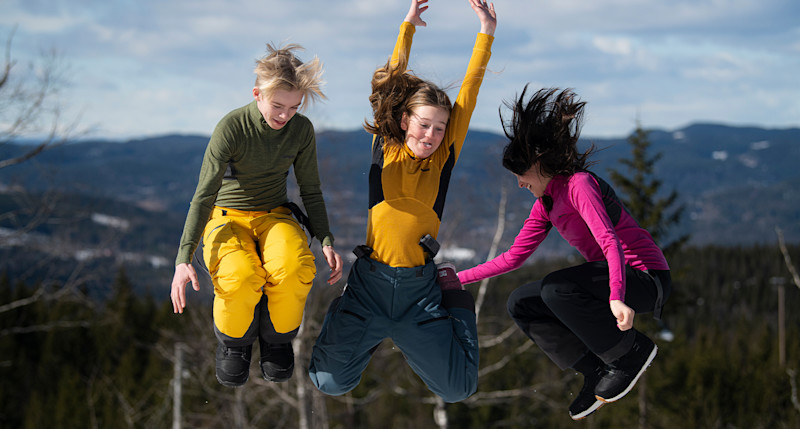
Layering clothes – Dress warm this winter
During a day out on the ski slope, the cross-country ski track or on a winter hike, it is important to stay warm to be able to enjoy the activity. Being cold is no fun – it can ruin a whole day! This guide provides some advice on how to best dress for fun-filled days outdoors in winter.
According to a Swedish saying there's no such thing as bad weather, just bad clothes – at Outnorth we know this to be true! Weather and wind shouldn't matter as long as you dress well. Wearing several layers of clothing, according to the multilayer principle, helps to insulate the body and retain body heat. When wearing multiple layers of clothing, an insulating layer of air is created between each layer, helping to retain the heat. In addition to this, each layer can have a specific function, such as transporting away moisture or protecting against wind, which helps to keep the body dry and comfortable whatever the weather. Several layers of clothing thus contribute to creating a more effective barrier against the cold than just one single thick layer of clothing. Multiple layers also allows you to take off or put on a layer if it gets too hot or if you change activity.

Things to consider when it's cold
- Having a good base layer is a good start, then another layer on top of that if it's really cold, and an insulating midlayer in fleece, wool or down
- Outer layer must be adapted to your activity – but it is important that it is wind- and waterproof
- Keep your hands and head warm with a hat and gloves
- Make sure feet are warm and dry by changing socks and wearing waterproof shoes
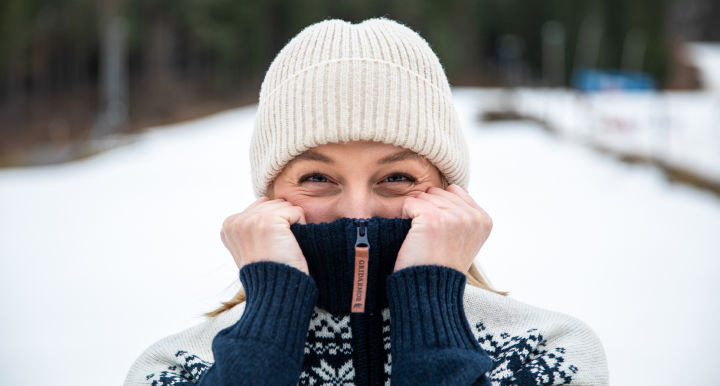
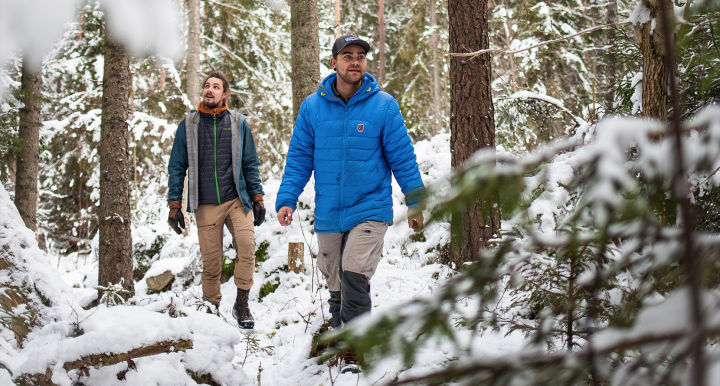
Layer 1: Base layer
The innermost layer you should have when you stay outside during the winter is a proper base layer. The best material for a base layer depends on your needs and preferences, but many choose to use merino wool because of its softness, comfort, moisture-wicking and temperature-regulating properties. Wool has natural properties that make it warm even when it gets damp, which is beneficial if you do a more demanding activity – read more in the merino wool guide. Synthetic materials such as polyester and polypropylene are also popular options due to their short drying time and ability to transport moisture away from the body. If you know you will do more intense activities, a synthetic base layer can be comfortable, but it needs to be washed more often than wool base layers. Choose the material that best meets your needs and wishes, the most important thing is to stay warm and dry.
Layer 2: Extra layer
The second layer should absorb the moisture that the first layer has led away from the body. Thin wool or wool and synthetic blends are recommended here because of the wool's good properties. Cotton absorbs moisture but will get wet and cold if you get too hot. Therefore, cotton can only be recommended if you will not exert yourself too much.
Layer 3: Mid layer
The next layer of your clothing should consist of a material that is thick, warm and insulating. This layer is meant to be put on during coffee breaks and taken off when it's time to move again. Ideal materials for mid layers include wool and fleece. Wool has the ability to keep you warm and insulate from the cold air outside, while allowing the body to breathe and regulate temperature. Fleece has no heat capacity of its own, but has a porous construction that binds air and keeps you warm. Down and synthetic insulation materials such as Primaloft or Thinsulate are also good options for a mid layer. Look for high-quality materials that are warm, light and compressible for easy packing into the backpack when not needed.
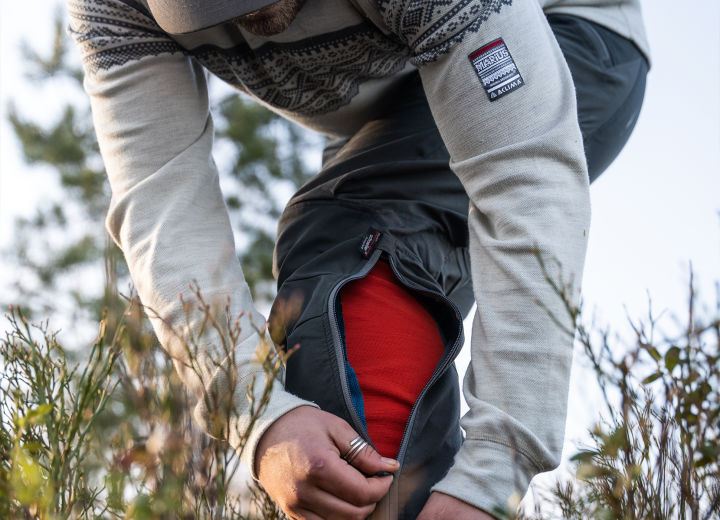
Layer 4: Outer layer
The outer layer should be windproof and waterproof – a shell jacket and shell trousers fit perfectly here. Membranes like GORE-TEX are ideal because they protect from water and wind but release moisture from your body. Shell clothing often has many closures, such as an adjustable hem and cuffs, these can be closed to retain warmth and opened if you get too hot. If you will be stationary for a longer period, however, it is important to put on a warmer outer layer. A packable down jacket or vest is smart to have in your bag to keep it close at hand – read more about down in the material guide.
Is it important to wear a hat and gloves?
The hands and head are particularly vulnerable to cold weather because they have many nerves and blood vessels close to the skin, which means that heat can quickly dissipate from them. When the hands and head become cold, the whole body can feel cold and you risk hypothermia. That's why it's important to wear a hat and gloves when it's cold. Materials that are good for gloves and hats in cold weather include wool, fleece and synthetics.
When you move around a lot or if you're not that frozen, finger gloves are a good choice. It is important that the gloves are waterproof – it may even be smart to have an extra pair of dry gloves with you. If you keep your body warm and dry, your hands are usually warm enough, especially if you move a lot, when you stand still for a long time you get cold however. If you are more frozen, thumb mittens will keep you warm, but you get less freedom of movement. Having thin wool gloves inside the thumb mittens can be beneficial if you need to remove the thumb mittens for better precision. There is also heated gloves that can keep your hands extra warm and comfortable.

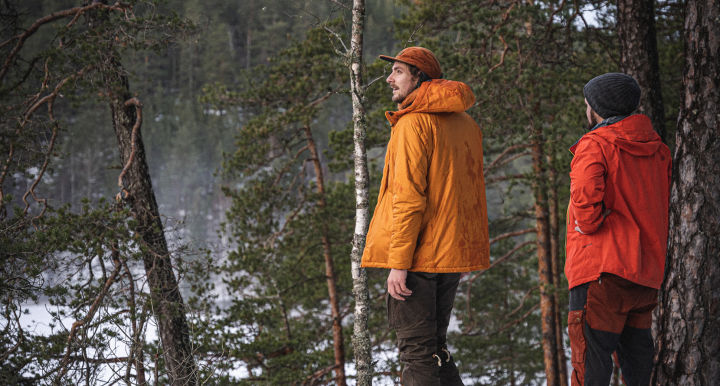
How do I keep my feet warm when it's cold?
To keep your feet warm in cold climates, it is important to choose the right shoes and socks. Socks made of wool or a combination of synthetic materials and wool are good choices to keep feet dry and warm. It is also a good idea to have two layers of socks, the inner layer can consist of moisture-wicking synthetics and the outer layer of warming wool. It can be smart to bring an extra pair of socks with you, especially if you plan to be outside for long periods in cold weather conditions. If you're hiking during the winter, it's good to change your socks a couple of times a day, before they get wet. You can warm your damp socks inside your trousers or dry them on the bag. Read more about choosing socks in our Sock guide.
Your shoes should be made of a material that retains heat and is waterproof, such as leather or GORE-TEX. Hiking boots with a high shaft are a good choice if you will be walking in snow, the shaft will prevent snow from penetrating the shoe. It is important that the shoes have enough space for the socks, so that there is some air around the feet – after all, it is the air that keeps you warm!
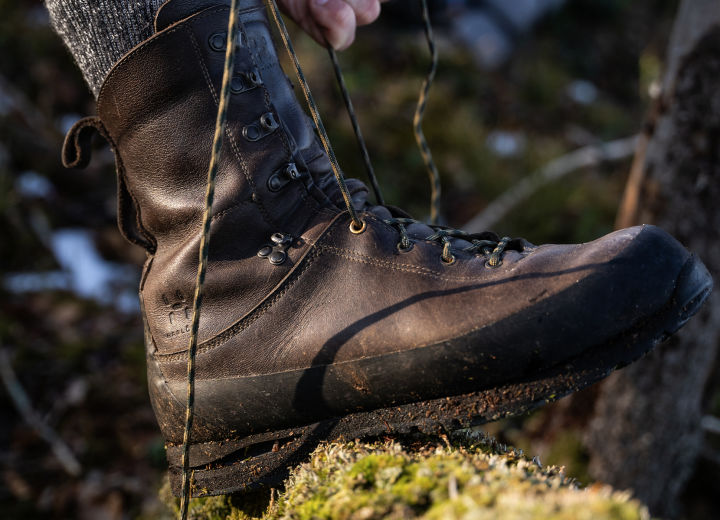
Conclusion
Outnorth we recommend at least three layers when you are outside in cold weather. It's no fun to freeze, but being too hot when it's cold is just as bad. When sweat dries, you quickly get cold – that's why it's important to choose materials that are moisture-wicking, quick-drying and outer layers that breathe. Follow these tips and remember that you can always take off or put on an extra layer and you will have great adventures outside this winter!